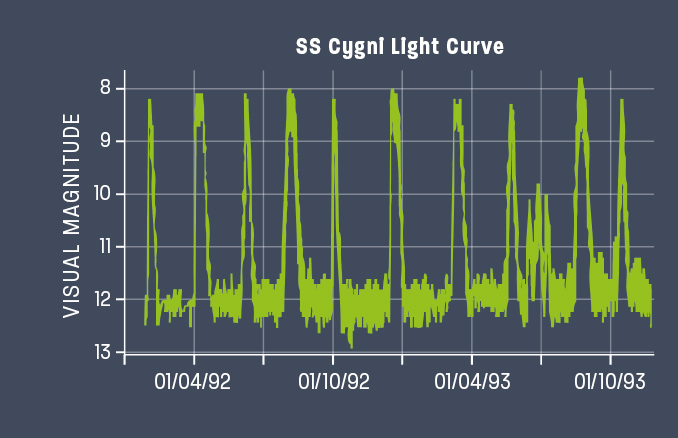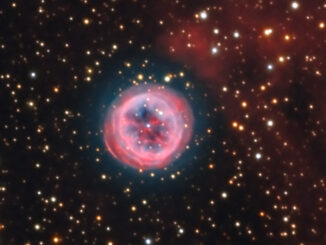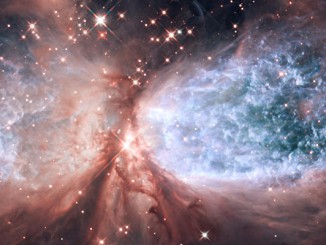Amongst its embarrassment of deep-sky riches, mighty Cygnus, the Swan, hosts two famous stars, the dwarf nova variable star SS Cygni and the binary 61 Cygni. Both stars boast a long and fruitful observational pedigree, with data accrued dating back well over a century, indeed since 1753 in the case of 61 Cyg. Its rapid proper motion (presently, more than 5” per year) was noticed by Italian astronomer Giuseppe Piazzi (1746–1826) and also it was the first object outside of the Solar System to have its distance measured – in 1838 by the German astronomer Friedrich Wilhelm Bessel (1784–1846). 61 Cyg is occasionally referred to as Piazzi’s Flying Star and Bessel’s Star.
Since SS Cygni was discovered in 1896 by Louisa D. Wells, one of the women ‘computers’ at Harvard College Observatory, it’s been one of the most intensively studied variable stars. Some 800 outbursts attracted over 220,000 observations alone to the American Association of Variable Star Observers (AAVSO) by the centenary of its discovery.

How to observe
Coming bang up to date, a small- to medium-aperture telescope is well capable of adding to both stars’ observational archive, with observers buoyed by both stars advantageous location riding high all summer long.
61 Cygni:
61 Cygni is a fifth-magnitude star that lies eight degrees south-east of Deneb (alpha [a] Cyg) and 1.7 degrees north-west of magnitude +3.7 tau (t) Cyg. The modern value for its distance is 11.37 light years; Bessel’s measure was 10.3 light years. This makes it the fourth-closest naked-eye star to our Solar System. Through large binoculars and a small telescope the view is transformed into a pair of magnitude +5.2 and +6.1 class-K main sequence orange-hued stars, separated by an easy 30” separation.
Here’s a long term project: High-resolution imaging or sketching at high powers over time can reveal 61 Cygni’s 5” proper motion by comparing its position to the fixed field stars.

SS Cygni
SS Cygni is a dwarf nova (one of several classes of cataclysmic variable stars [CVs]) that spends most of its time at around twelfth magnitude. It can be found 2.5 degrees south-east of magnitude +4 rho Cyg.
When in outburst it dramatically brightens by a factor of around 40, taking it up to magnitude 8, within range of a pair of 10 x 50 binoculars. The outbursts are not predictable in advance, with the interval between them varying but averages around 50 days. Some outbursts are over within about a week, while others can last for more than a fortnight.




